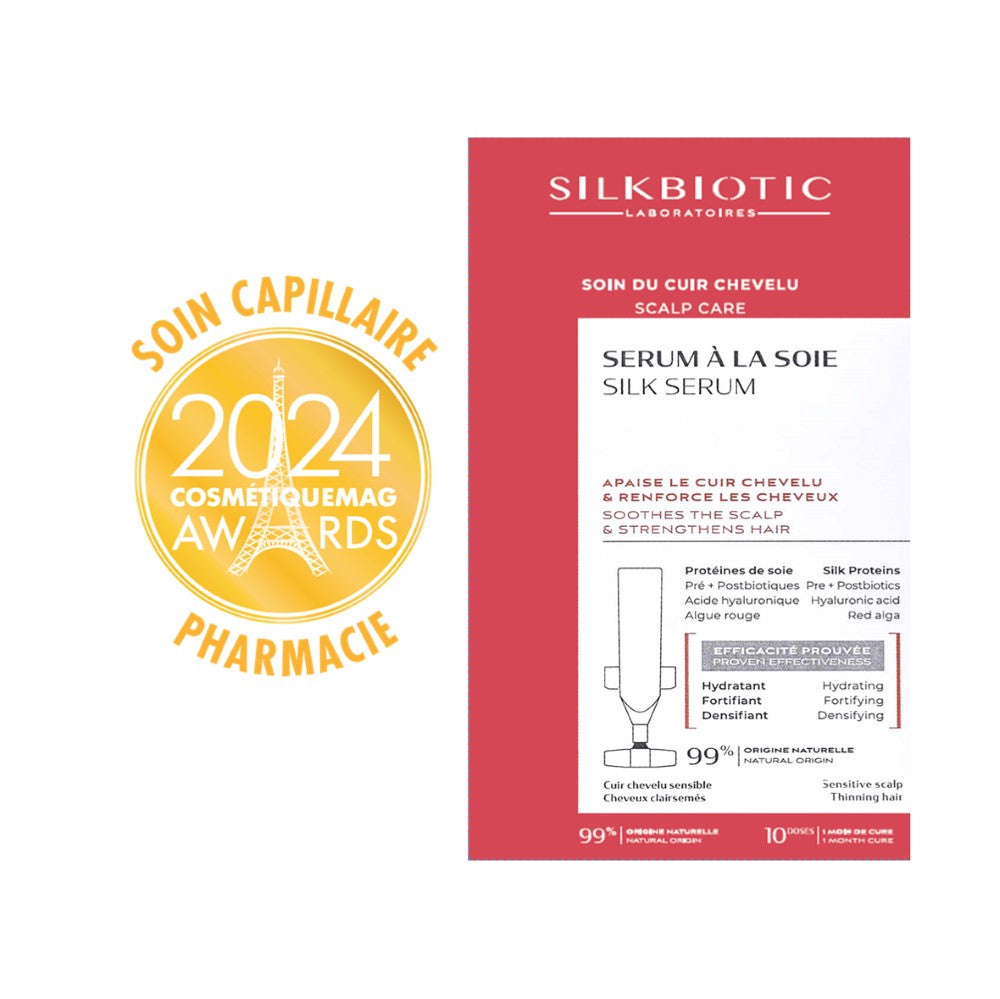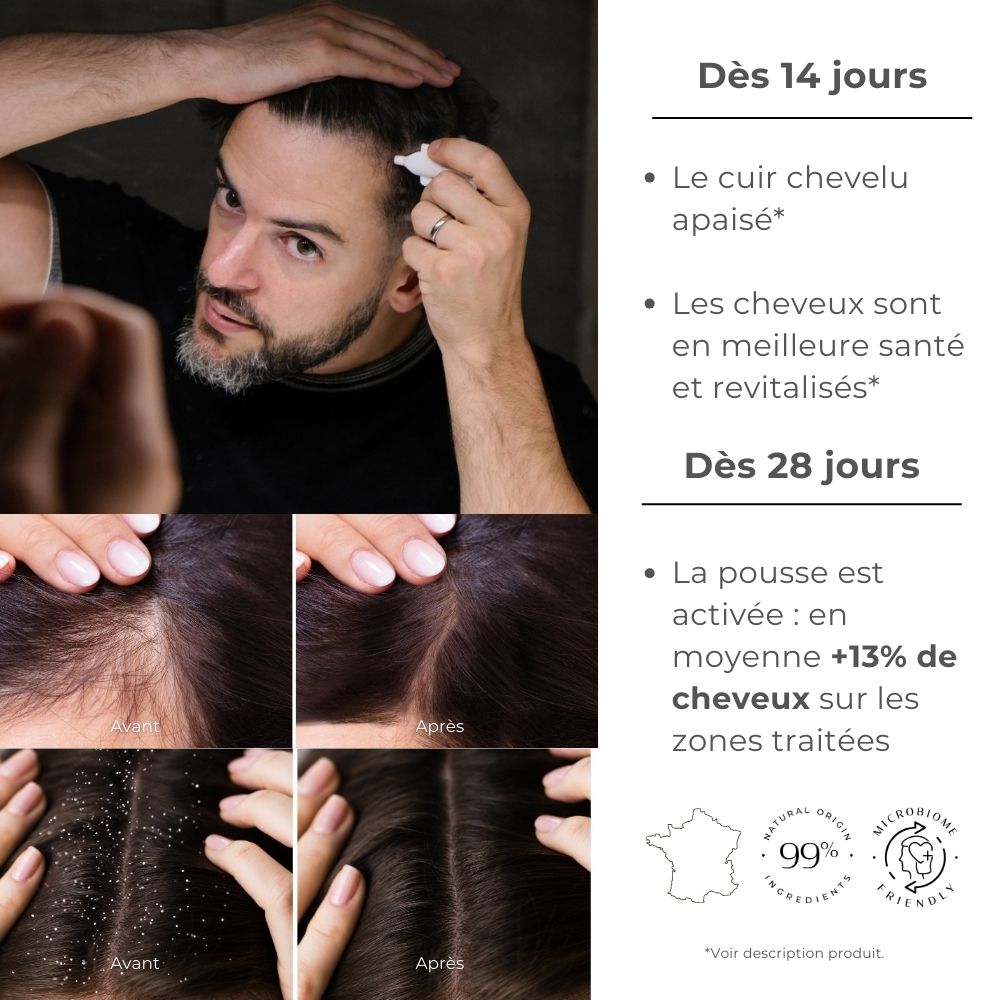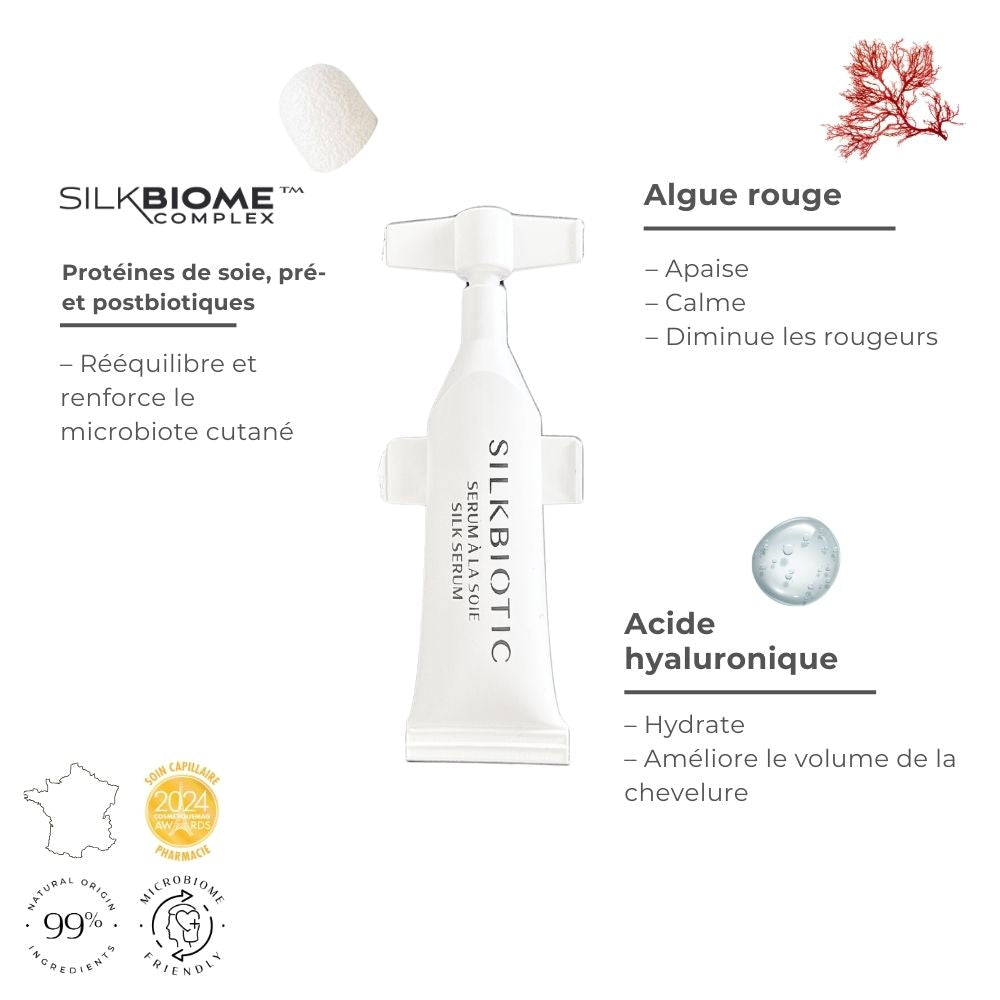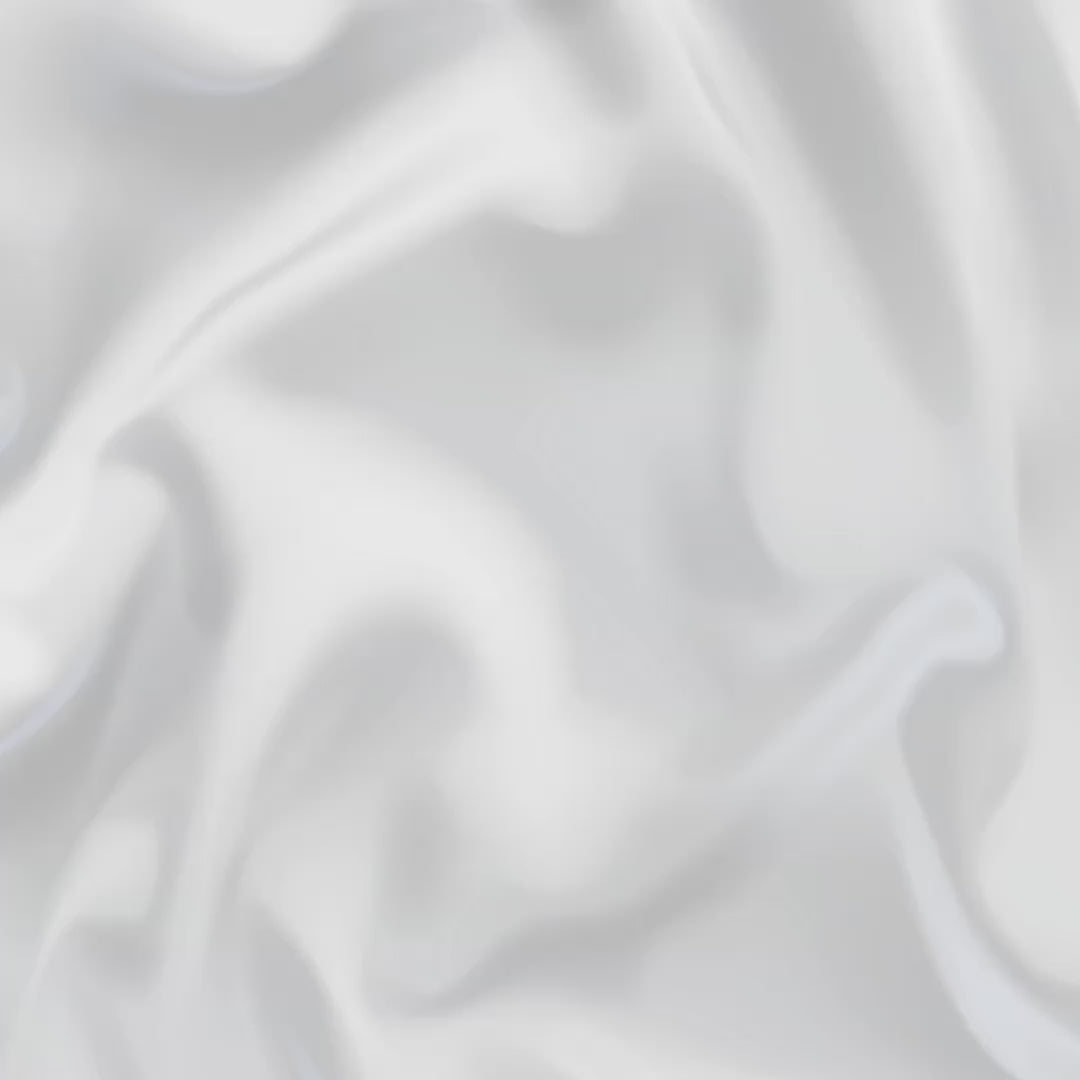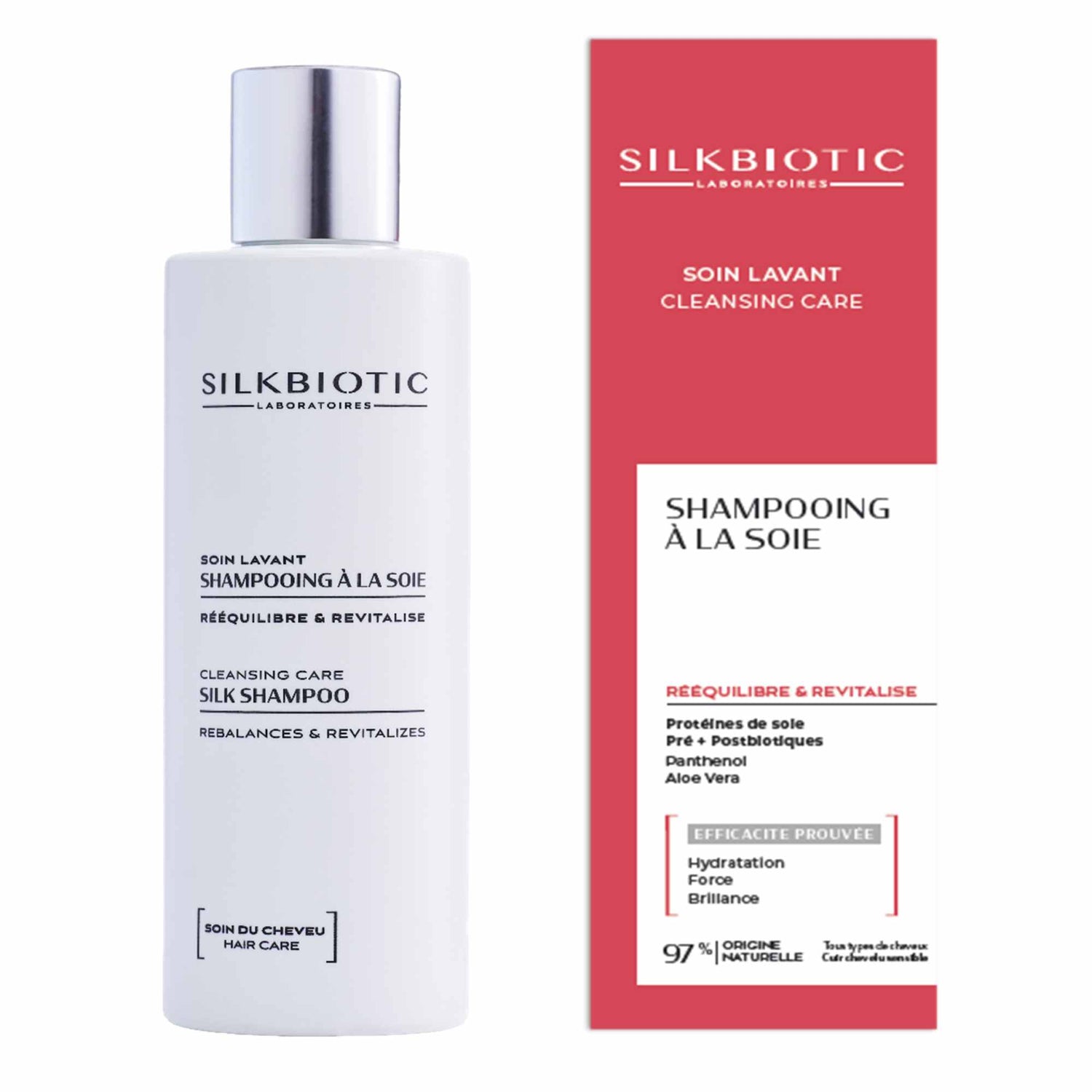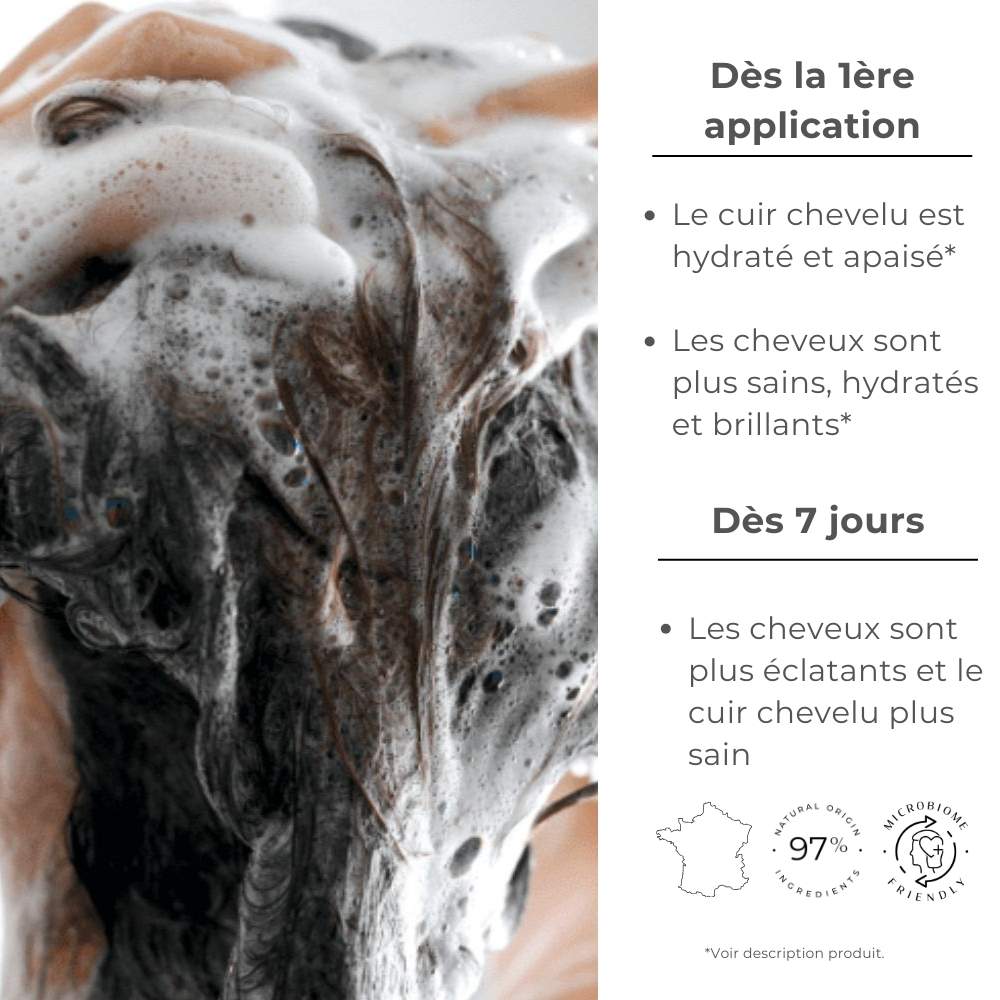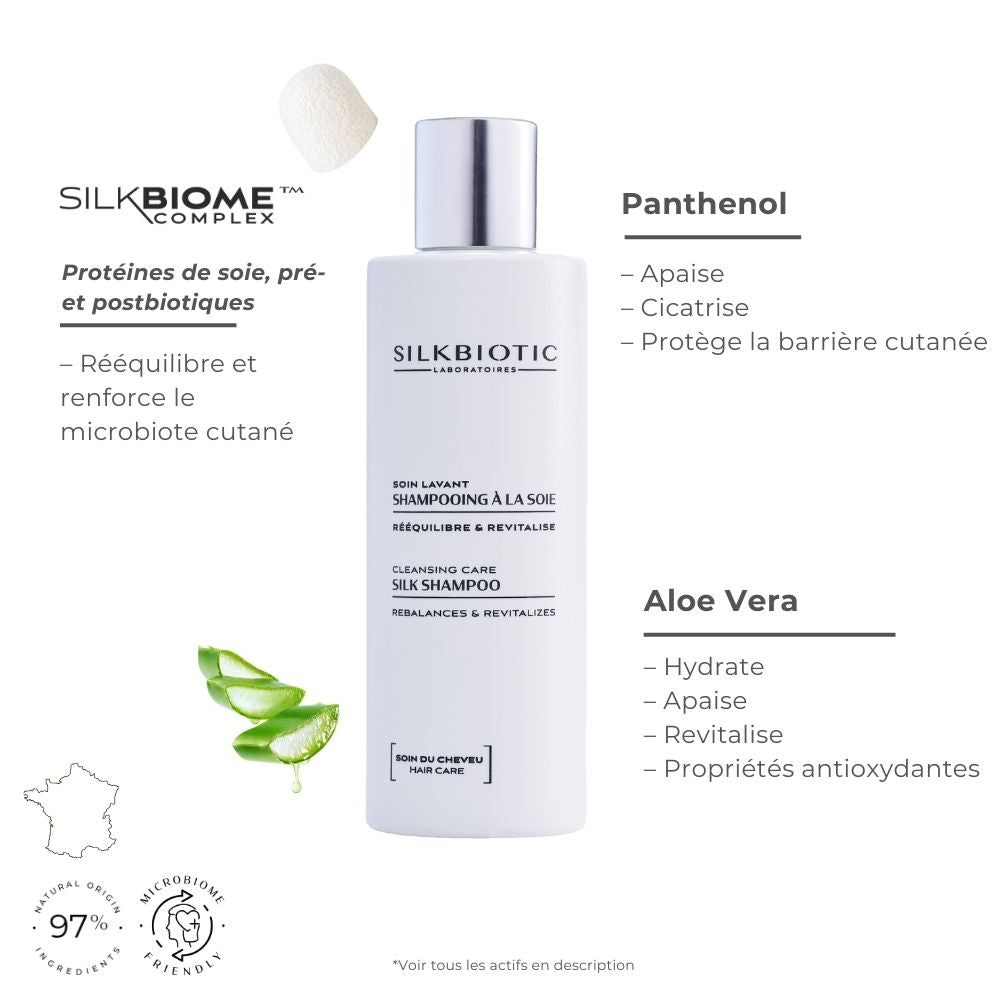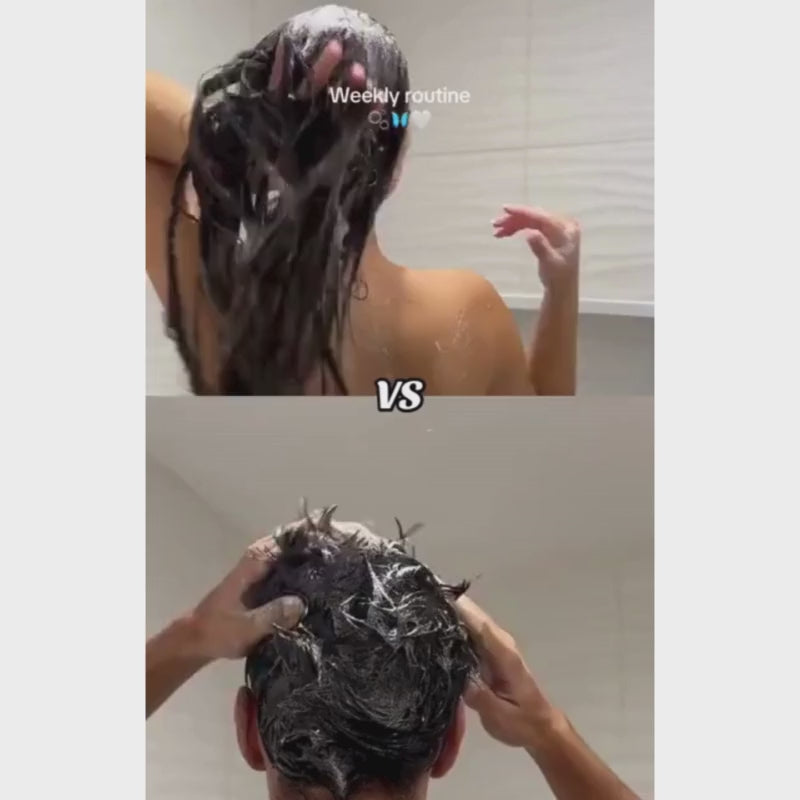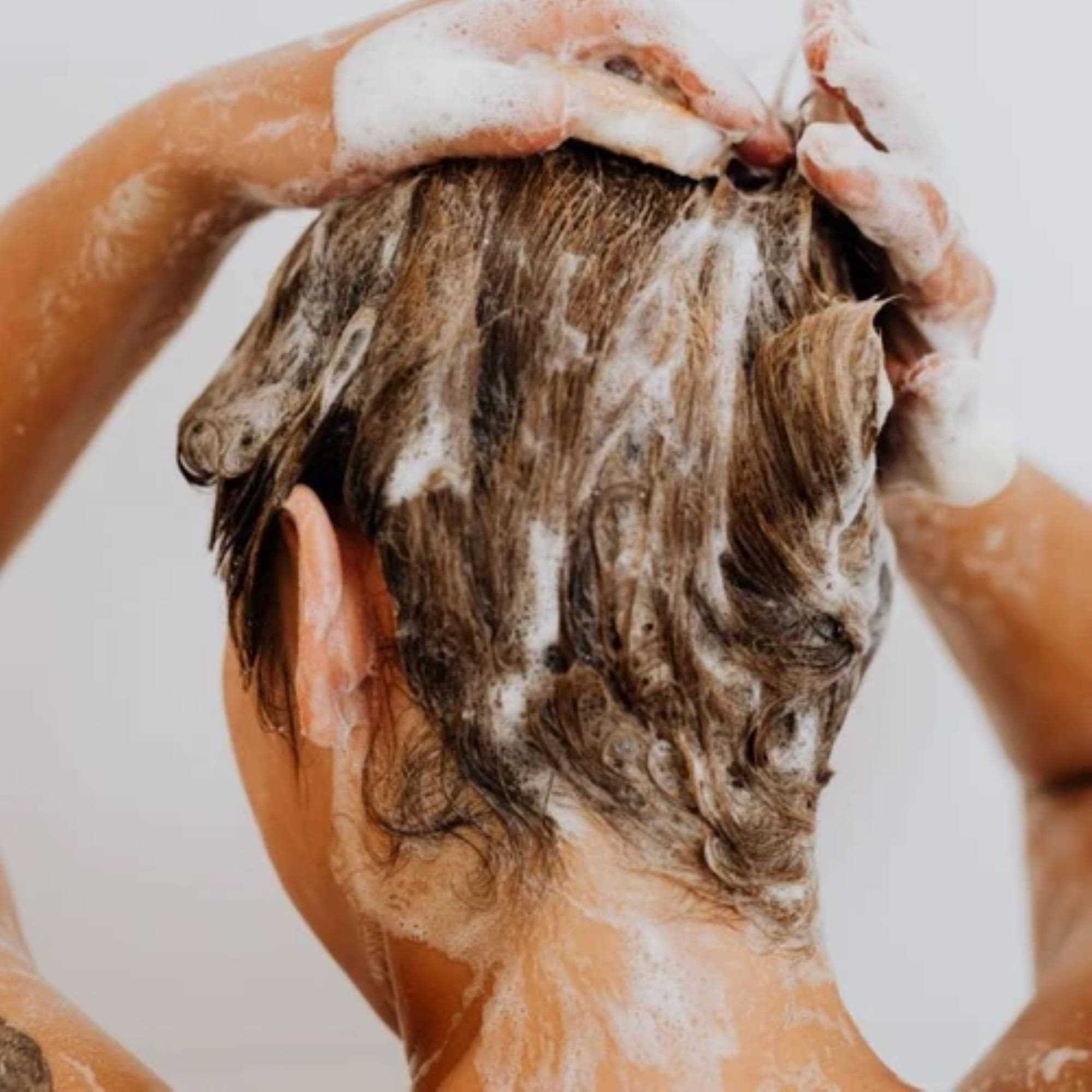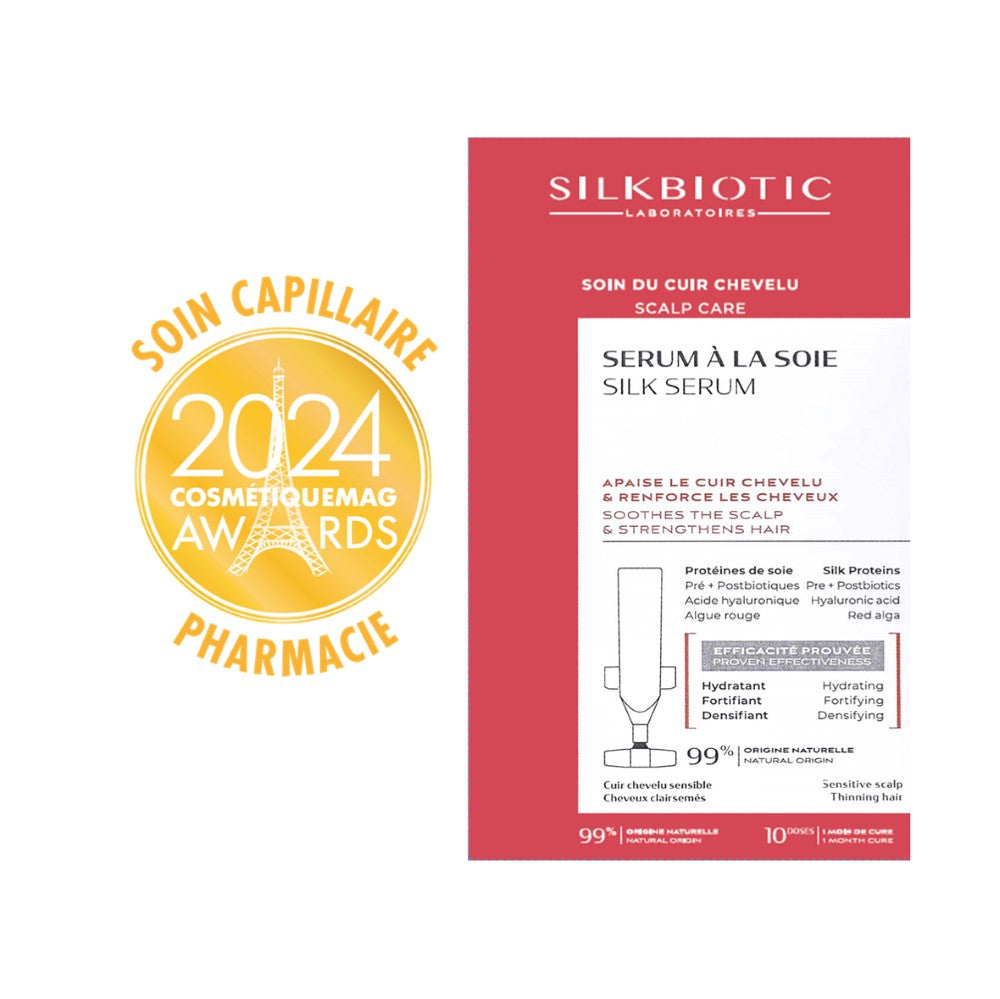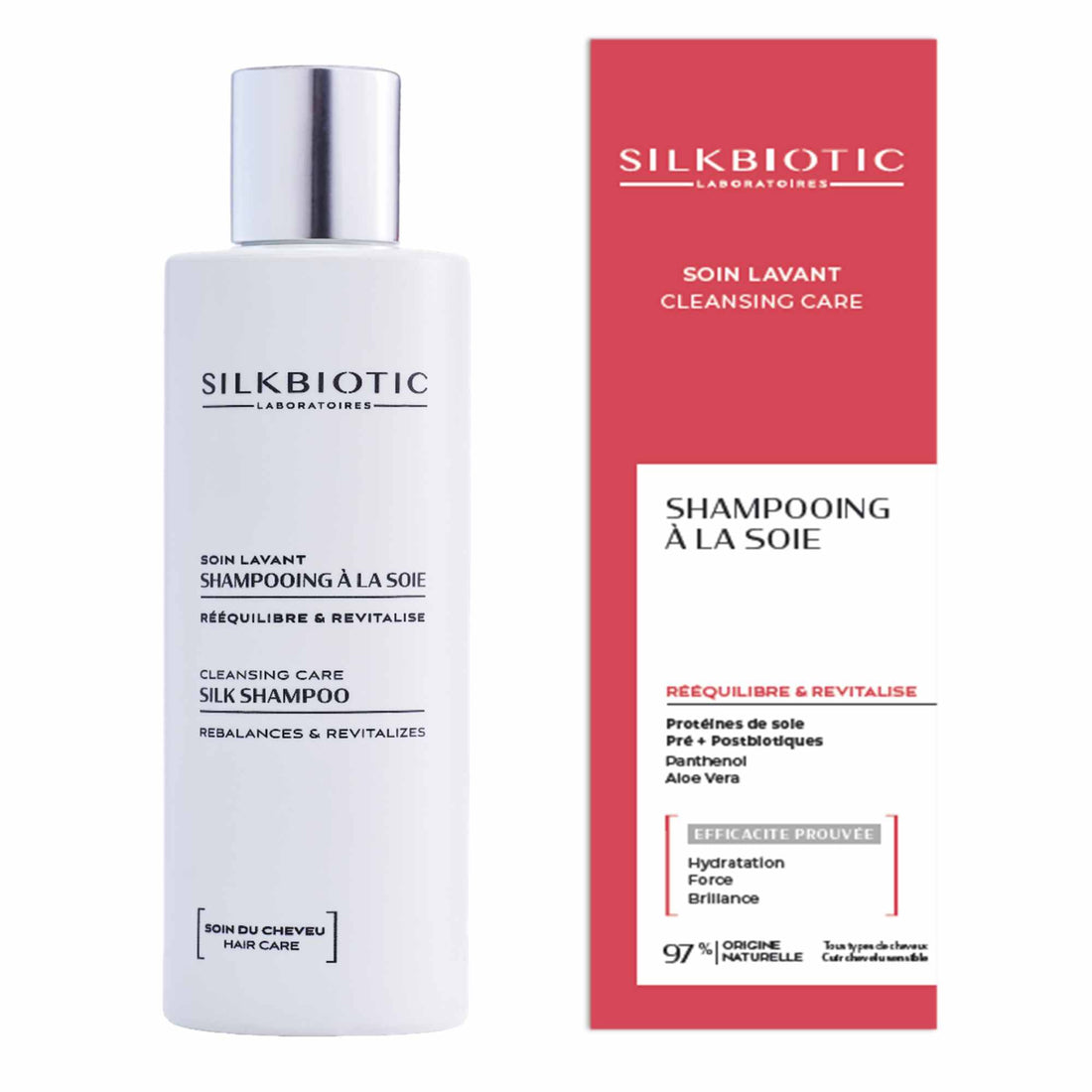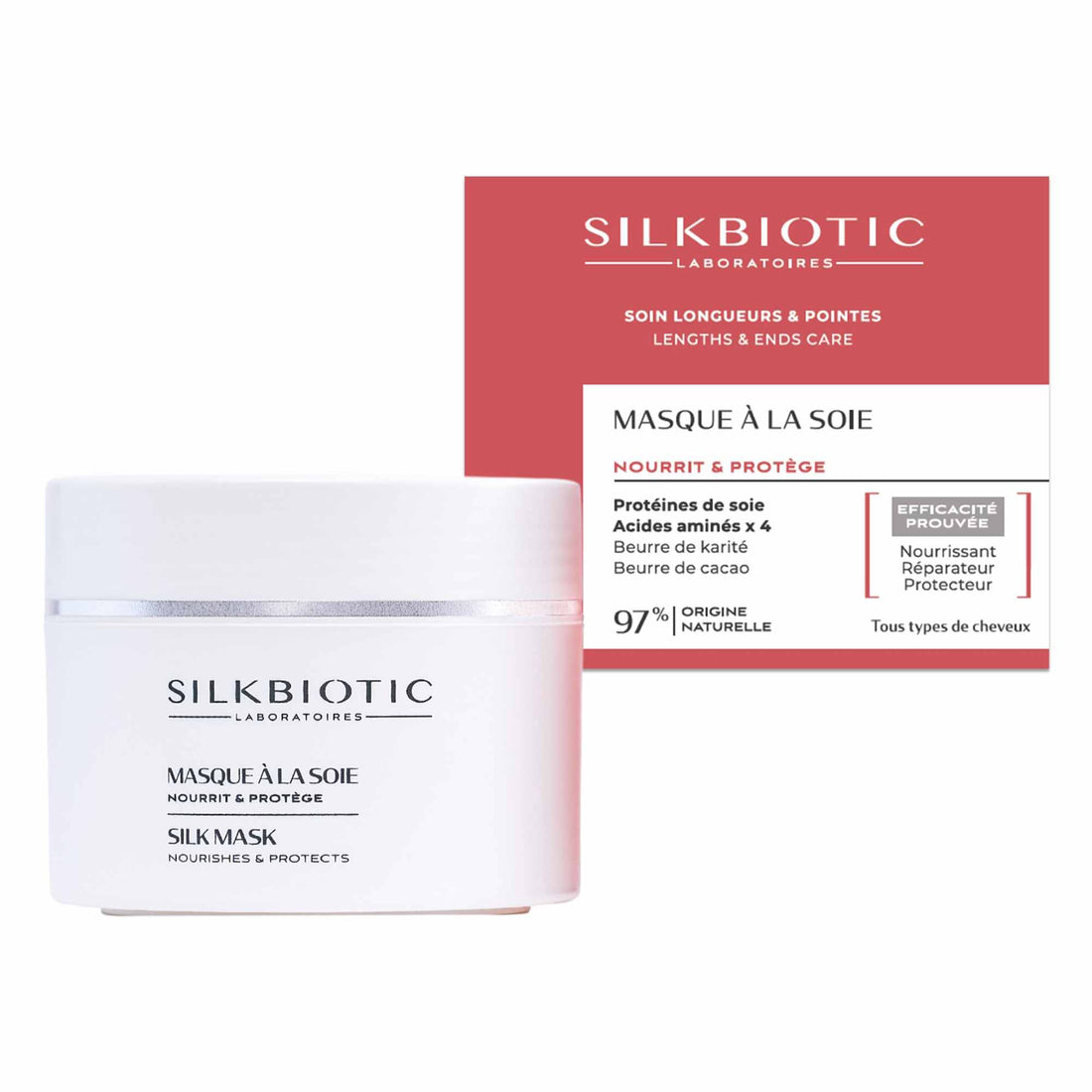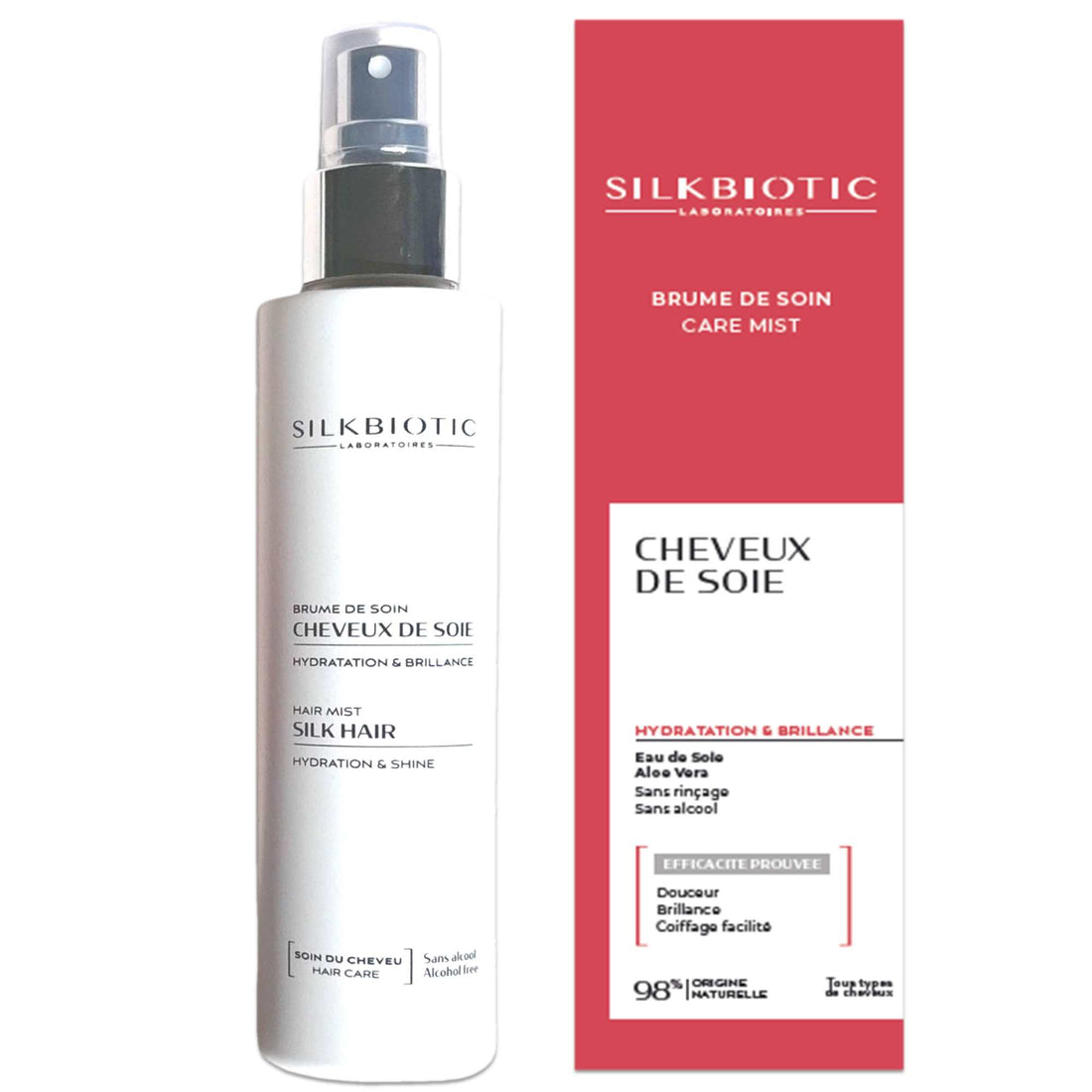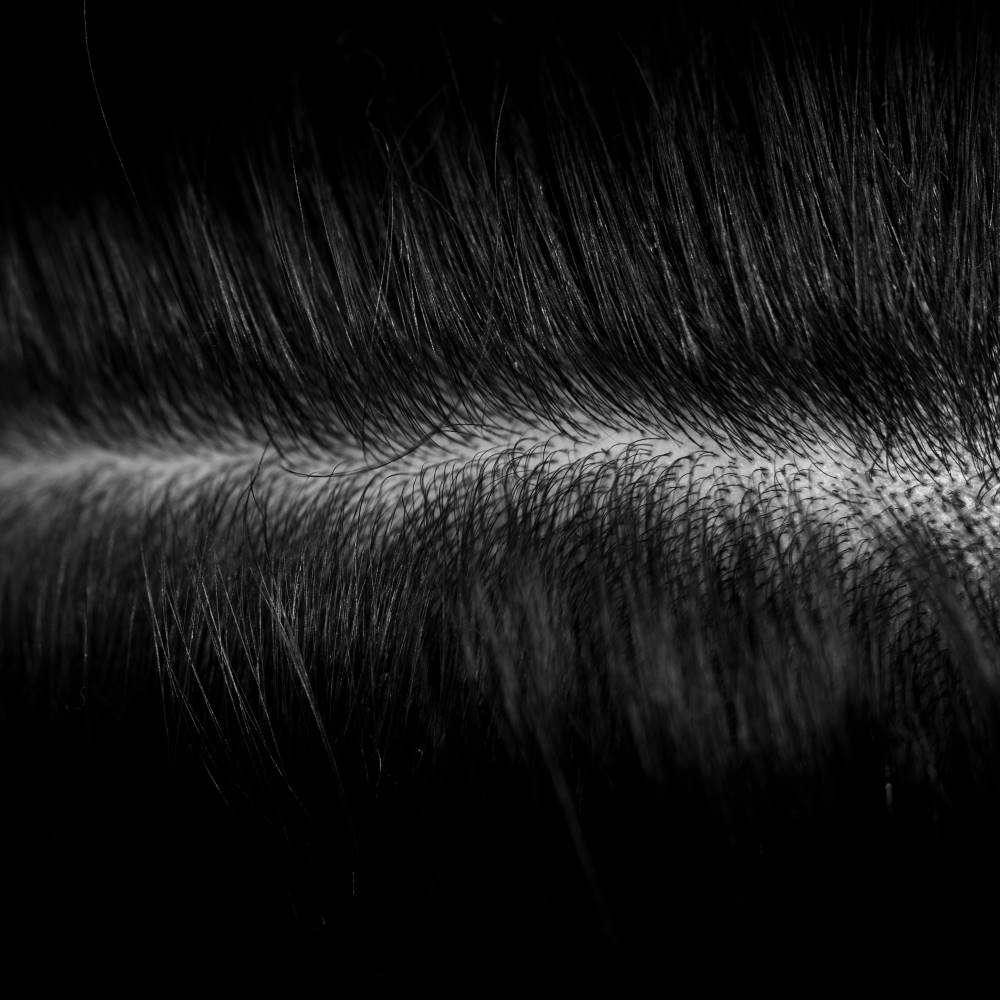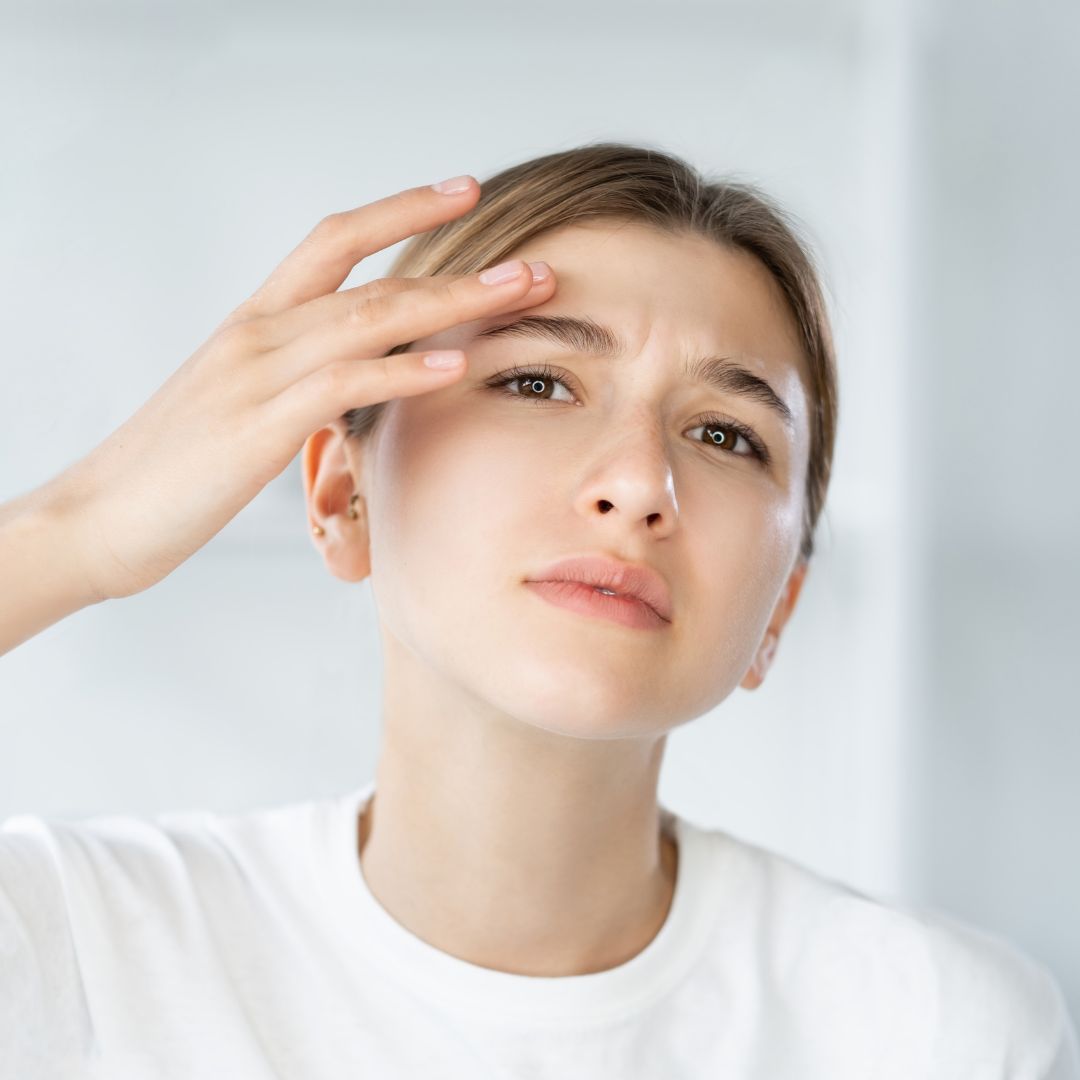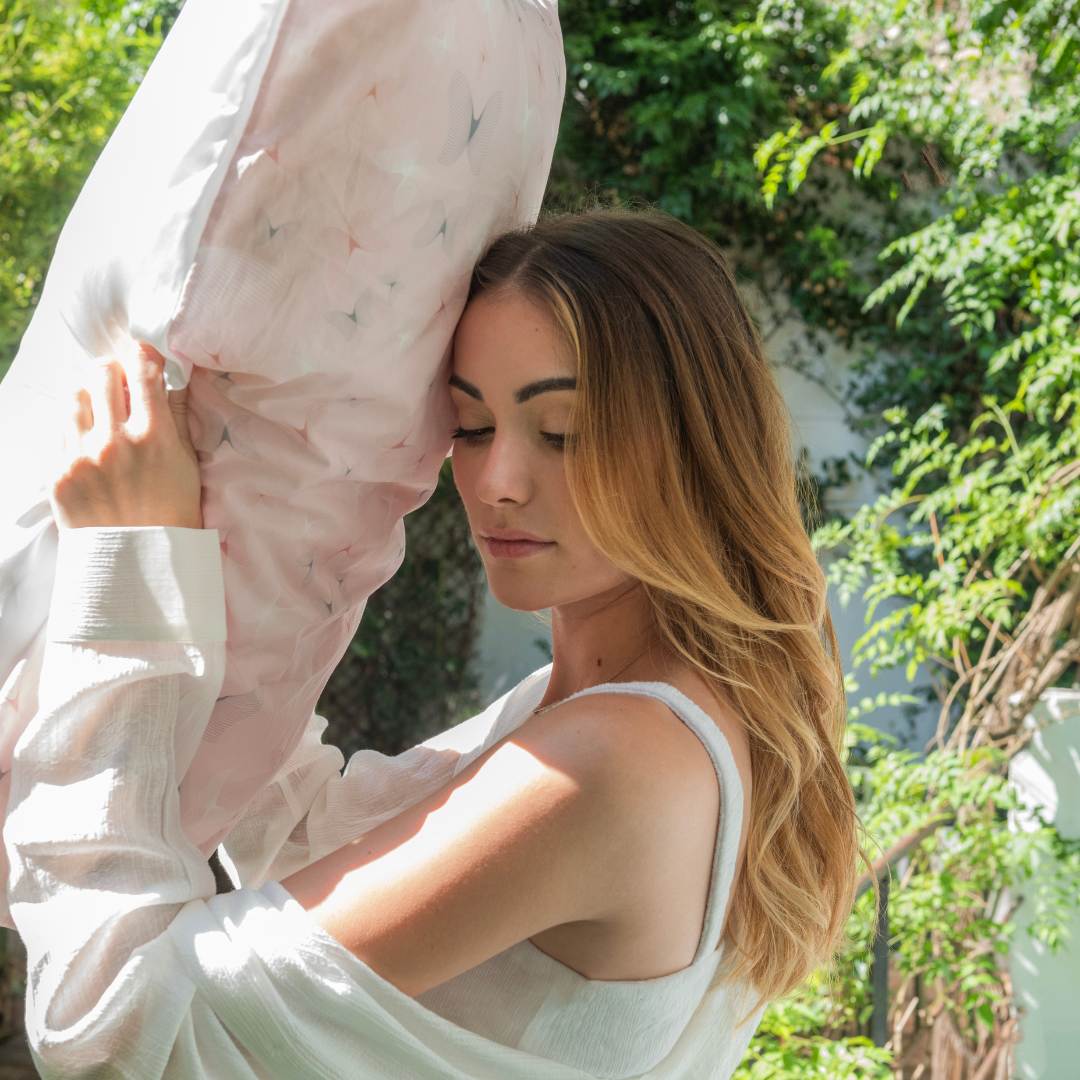Scalp balance and health: the importance of scalp microbiota
How are hair and scalp structured?
Like the skin, the scalp is structured in three layers: the hypodermis, the dermis, and, on the surface, the epidermis. The hair follicle is rooted in the dermis, then passes through the epidermis to emerge on the surface of the skull.

Anatomy of the hair
From an anatomical point of view, human hair is composed of two parts:
- The shaft: it is made up of keratinised, anucleated epithelial cells. This is the part of the hair that we style; it is the outer part.
- The root: this is the pilosebaceous unit, which is composed of the hair follicle (root) and its appendages (sweat and sebaceous glands, arrector muscle).
Can the scalp be considered skin?
The scalp is the skin that covers the skull and on which hair grows. Like the skin, the scalp is composed of a dermis and an epidermis. The scalp can therefore be considered as skin. The term ‘skinification of the scalp’ is used to refer to the care given to the scalp, just as one takes care of the skin on one's face.
The scalp microbiota
Is there microbiota on the scalp?
A single square centimetre of human skin can contain a billion microorganisms on its surface, including bacteria, viruses and fungi (Chen et al. 2018). The microbiota present on the scalp has been studied and characterised (notably by Watanabe et al. 2019), and its role in hair health is a very active area of research as there is still much to learn.
Is the skin microbiota the same for everyone?
The skin and scalp are complex, dynamic ecosystems. The nature of the skin microbiota and the interactions between the host and the skin microbiota depend greatly on the context, the host's immune system, genetic predispositions, the skin barrier, the location of the microbiota, and interactions between microbes (Chen et al., 2018).
What is the role of the skin microbiota?
Under normal circumstances, the skin microbiota acts as a natural shield on the skin's surface: it works symbiotically to promote the host's health. In other cases, an unbalanced microbiota can lead to disease or other problems. Mycobacteria, for example, can cause a wide range of pathologies, from systemic disease to skin manifestations such as irritation or plaques (Chen et al. 2018).

The scalp also has a surface that harbours microbiota: What causes imbalance or scalp diseases?
The involvement of microbiota in scalp diseases can potentially occur at different levels, but these complex interactions need to be further characterised in scientific research. However, in Figure 1, taken from the scientific article by Polak-Witka et al., the pro-inflammatory effects of yeast (shown in purple in Figure 1) have been described in dandruff and seborrheic dermatitis (Schwartz et al. 2013). This can lead to mechanism 1: inflammation and hyperproliferation of the epidermis, which manifests as irritation, redness and dandruff. Mechanisms 2, 3 and 4 also show inflammatory reactions related to the scalp microbiota, such as psoriasis.
What is microbiota dysbiosis and what is its impact?
Dysbiosis is the term used to describe an imbalance in the microbiota. This can affect the microbiota in the gut, on the skin or on the scalp. A recent study (Woo et al. 2022) compared the scalp microbiota of 10 people with healthy scalps to that of 10 people with atopic dermatitis. Scalp dermatitis is quite common: it appears as red patches covered with white or yellowish dandruff. The scalp microbiota of people with dermatitis showed characteristic dysbiosis – an imbalance – in all subjects in the study.
What are the symptoms of scalp imbalance?
The symptoms of scalp imbalance can be mild, such as irritation: the scalp itches and scratches. Patches may appear, as well as inflammation and hyperproliferation of the epidermis, leading to excessive dandruff. Occasional hair loss may also be observed.
An imbalance in the scalp and its microbiota can also lead to more severe inflammation, such as psoriasis, or chronic diseases. These imbalances represent medical needs for which there is no adequate response. This is all the more problematic as an imbalance in the scalp can impact not only health but also people's psychosocial well-being (Kanti et al. 2018): research is currently underway in both pharmaceutical and dermo-cosmetic approaches.
What treatments are available to restore balance to the scalp?
Silk: a scientifically researched treatment to rebalance the scalp's microbiota
The scalp can be rebalanced by restoring the health of the scalp's microbiota. This is the purpose of silk treatment with the SILKBIOME complex.
The SILKBIOME complex is an innovation patented by SILKBIOTIC Laboratories.
Silk is used for its protective properties: just as the silk cocoon protects the chrysalis, silk acts as a protective agent for the skin microbiota. Combined with prebiotics and postbiotics, silk helps to rebalance the scalp microbiota.
We recommend using SILKBIOTIC scalp serum twice a week.
SILKBIOTIC - Silk scalp serum - 10x5ml
- Regular price
-
€43,90 - Regular price
-
- Sale price
-
€43,90
Tax included.
Shipping calculated at checkout.
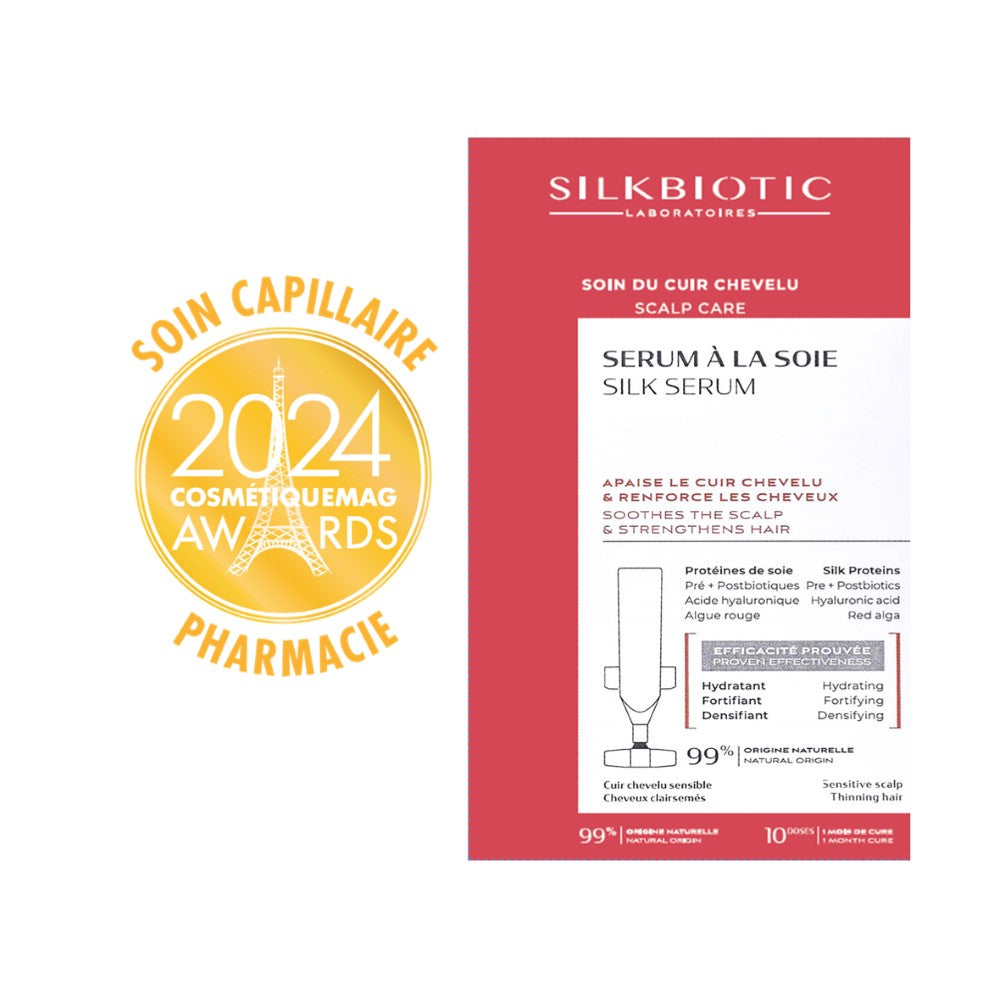
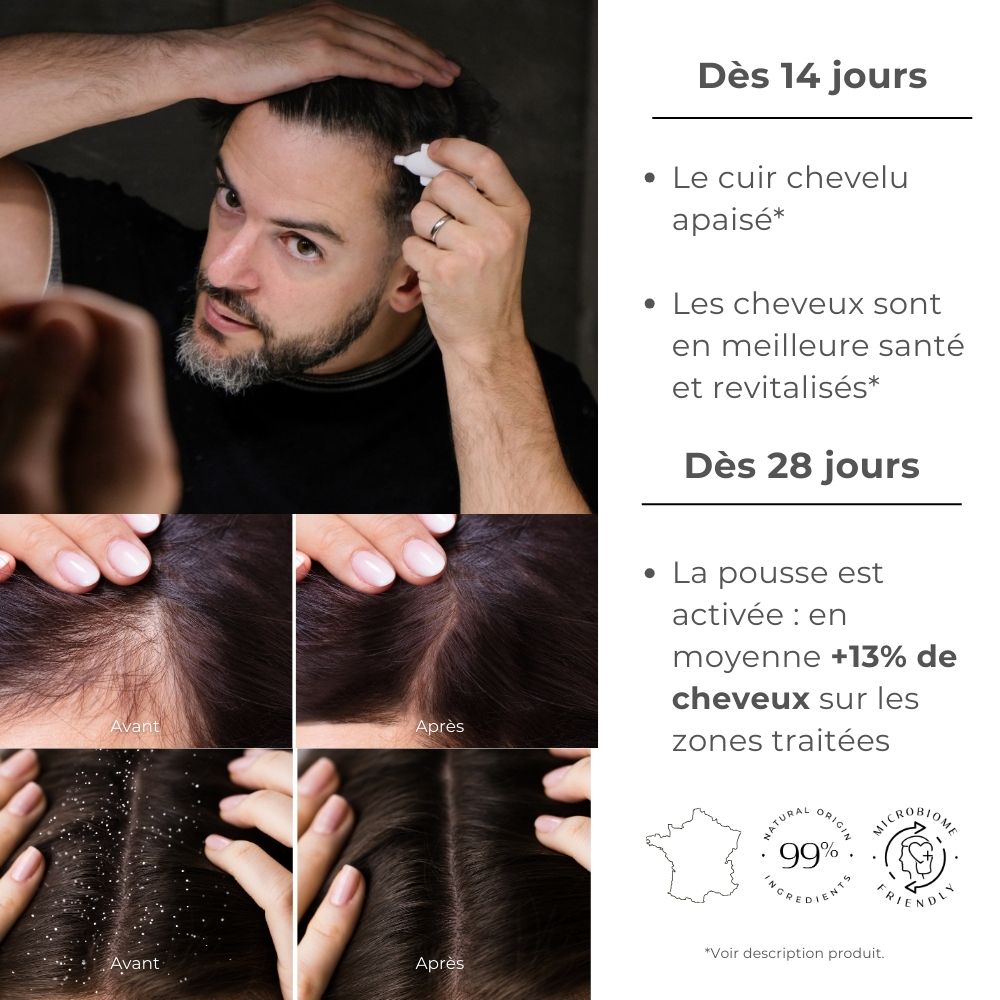
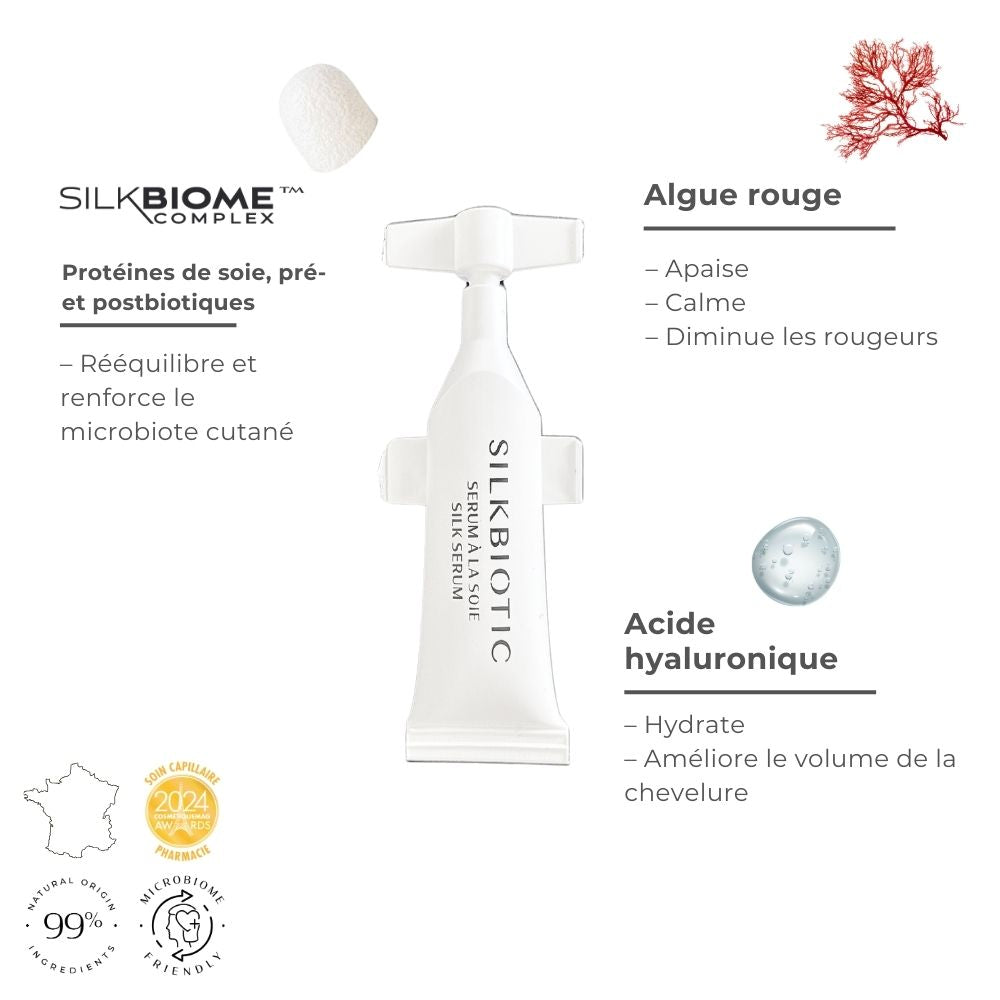
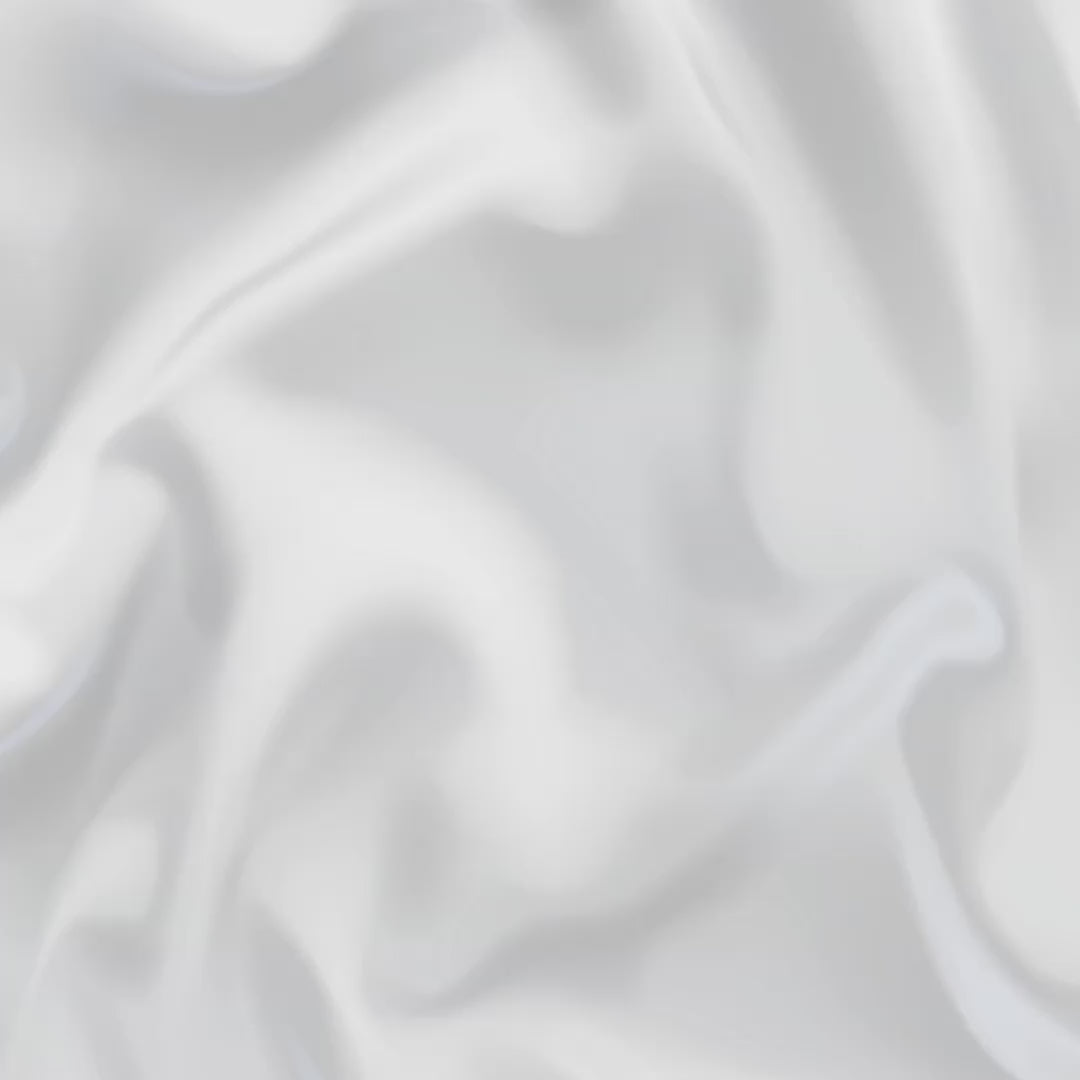
How the silk rebalancing treatment works (patented innovation)
How to apply the scalp treatment:
Apply a few drops directly to the scalp and massage in. We recommend using a scalp massage brush, as this activates microcirculation. Leave on for as long as possible: the serum can be applied in the evening before bed, the night before shampooing, or after showering, without rinsing.
How the scalp serum works:
Upon contact with the serum, the scalp's microbiota is strengthened. In addition, the serum's other active ingredients soothe (action of hyaluronic acid) and slow hair loss (action of Lindera Strychnifolia).
How effective is treatment with silk serum?
Proven effectiveness: three types of tests were carried out on the effectiveness of the scalp serum.
- A microbiota population test: testers used the serum twice a week for 28 days. Samples of their scalp microbiota were taken on day 1 and day 28. The microbiota was characterised and the population of symbiotic bacteria, fungi and viruses increased.
- A hair density test: testers used the serum twice a week for 28 days. A photograph of the scalp was taken on day 1 and day 28. The hairs were counted and it was proven that hair density increased by an average of 13%.
- A usage test: testers used the serum twice a week for 14 days, without knowing the brand of the product. Their opinions were collected through a questionnaire.
- 93% of users reported that their scalp felt soothed.
- 96% of users said that their scalp was better hydrated.
Recognition of the serum's excellence by professionals:
The scalp serum won the award for best hair care product in pharmacies, awarded by pharmacists and professionals in the sector for its innovative nature (SILKBIOME patent) and effectiveness.
The quality of your shampoo is important for the balance of your scalp.
Wash your scalp without damaging it.
In addition to local scalp treatment, we recommend choosing a shampoo that is gentle on the scalp. SILKBIOTIC Laboratories offers a natural silk shampoo with the SILKBIOME patent. Designed to rebalance the scalp's microbiota, this natural shampoo cleanses the scalp and hair without damaging the scalp's microbiota.
It is essential to use a shampoo that does not damage the scalp or strip away the skin's microbiota, which acts as a protective shield. Cheap shampoos often contain a lot of surfactants. Surfactants are foaming agents, but they irritate and strip the scalp.
We recommend that you at least check the INCI composition of your shampoo, or test it on an app such as Yuka or INCI beauty.
Scalp balance: can essential oils be applied to the scalp?
Essential oils contain active ingredients, and we recommend using them with caution, taking into account their reactivity and concentration. Some essential oils can be used on the scalp, but we recommend checking their safety through thorough research in aromatherapy.
SILKBIOTIC Silk shampoo - Cleansing care - 200ml
- Regular price
-
€29,60 - Regular price
-
€32,90 - Sale price
-
€29,60
Tax included.
Shipping calculated at checkout.
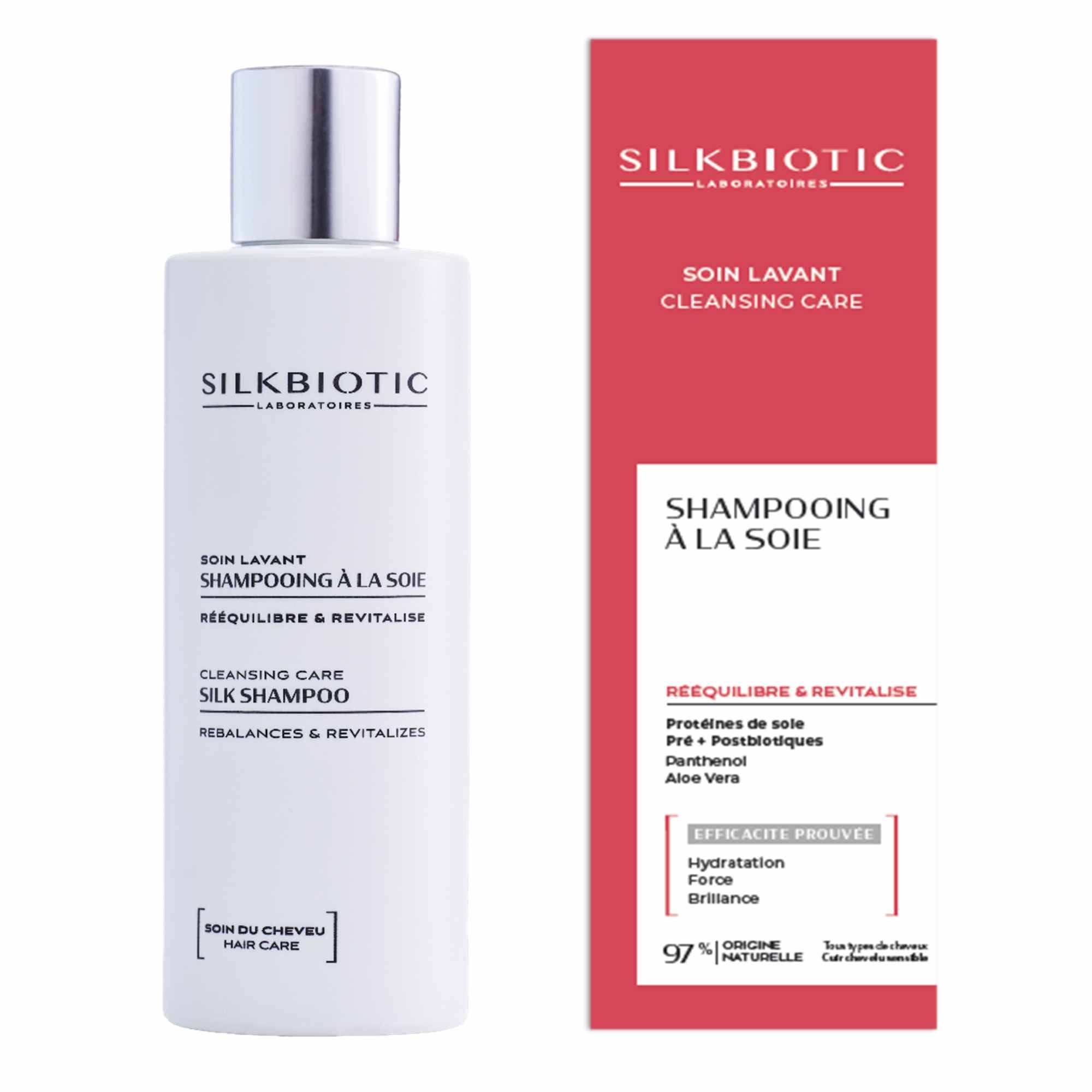

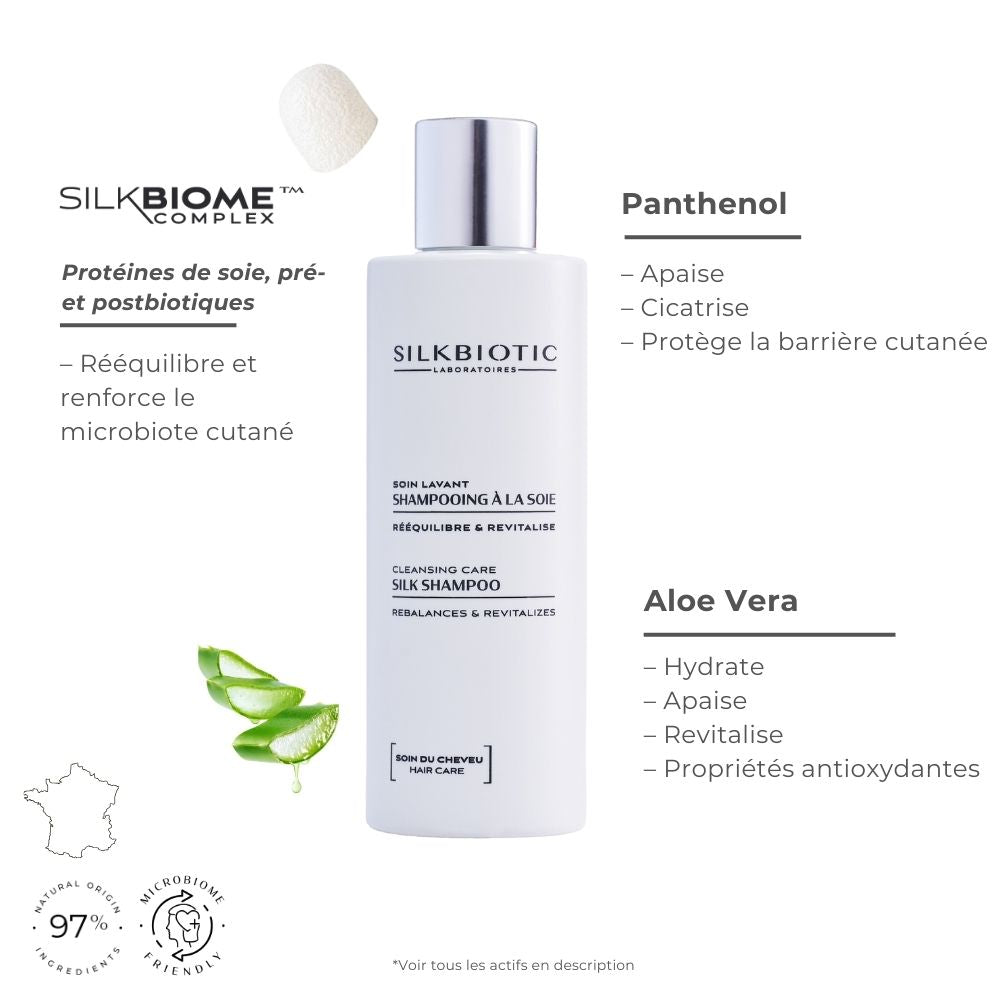
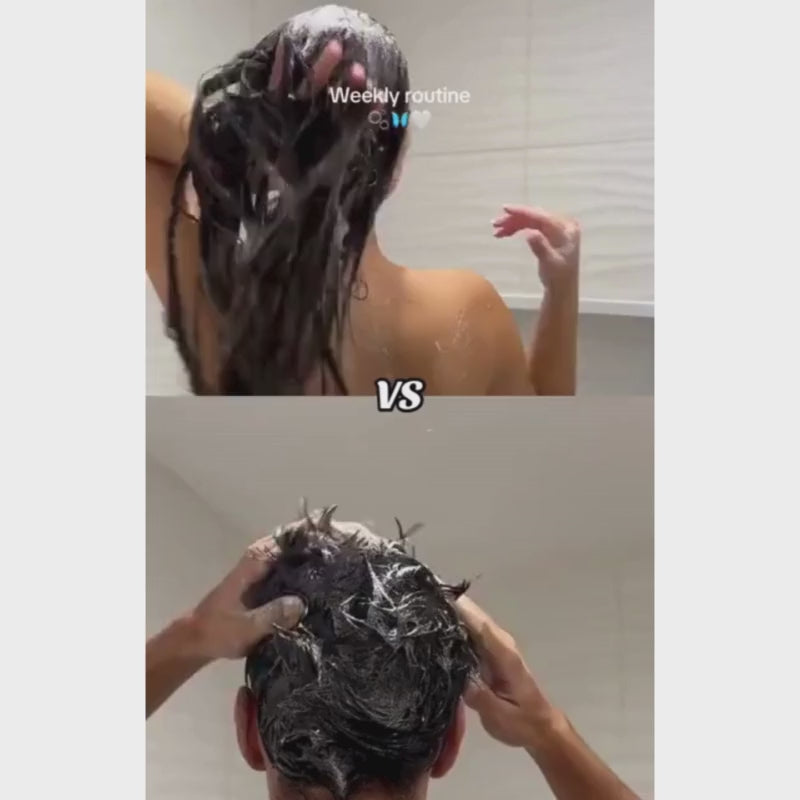
Combine the rebalancing serum with silk with the rebalancing shampoo with silk: restore health to your scalp.
By combining the rebalancing serum with silk (twice a week) and the rebalancing shampoo with silk, you will allow the scalp's microbiota to rebalance itself. Your scalp will regain its health, which will have a positive impact on the beauty and quality of your hair.
You will find a two-month treatment offer at a preferential price below.
Example product title
- Regular price
-
€19,99 - Regular price
-
- Sale price
-
€19,99
Tax included.
Shipping calculated at checkout.
Bibliographical references
Scientific articles, peer-reviewed reference journals
CHEN, Y. Erin, FISCHBACH, Michael A., et BELKAID, Yasmine. Skin microbiota–host interactions. Nature, 2018, vol. 553, no 7689, p. 427-436.
KANTI, Varvara, RÖWERT‐HUBER, Joachim, VOGT, Annika, et al. Cicatricial alopecia. JDDG: Journal der Deutschen Dermatologischen Gesellschaft, 2018, vol. 16, no 4, p. 435-461.
SCHWARTZ, James R., MESSENGER, Andrew G., TOSTI, Antonella, et al. A comprehensive pathophysiology of dandruff and seborrheic dermatitis-towards a more precise definition of scalp health. Acta Derm Venereol, 2013, vol. 93, no 2, p. 131-7.
WATANABE, Kota, NISHI, Eiji, TASHIRO, Yukihiro, et al. Mode and structure of the bacterial community on human scalp hair. Microbes and environments, 2019, vol. 34, no 3, p. 252-259.
WOO, Yu Ri, CHO, Minah, HAN, Yujin, et al. Characterization of distinct microbiota associated with scalp dermatitis in patients with atopic dermatitis. Journal of Clinical Medicine, 2022, vol. 11, no 6, p. 1735.
Website:
VIDAL, dossier patient : Chute de Cheveux, consulté le 16/06/2025
Discover the star ingredients in our scalp treatments
-
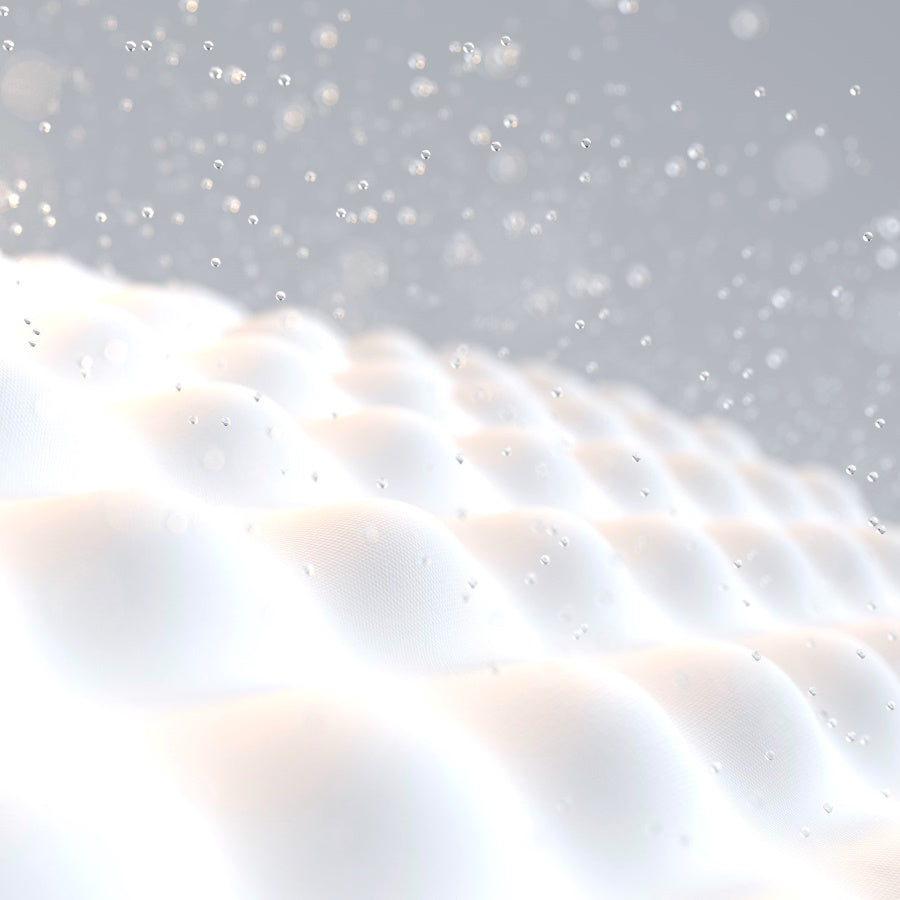
Silkbiome Complex: Properties and Benefits
Read moreThe SILKBIOME™ complex is a patented innovation developed by SILKBIOTIC Laboratories. It is the first silk-based complex that exclusively combines amino acids from...
-
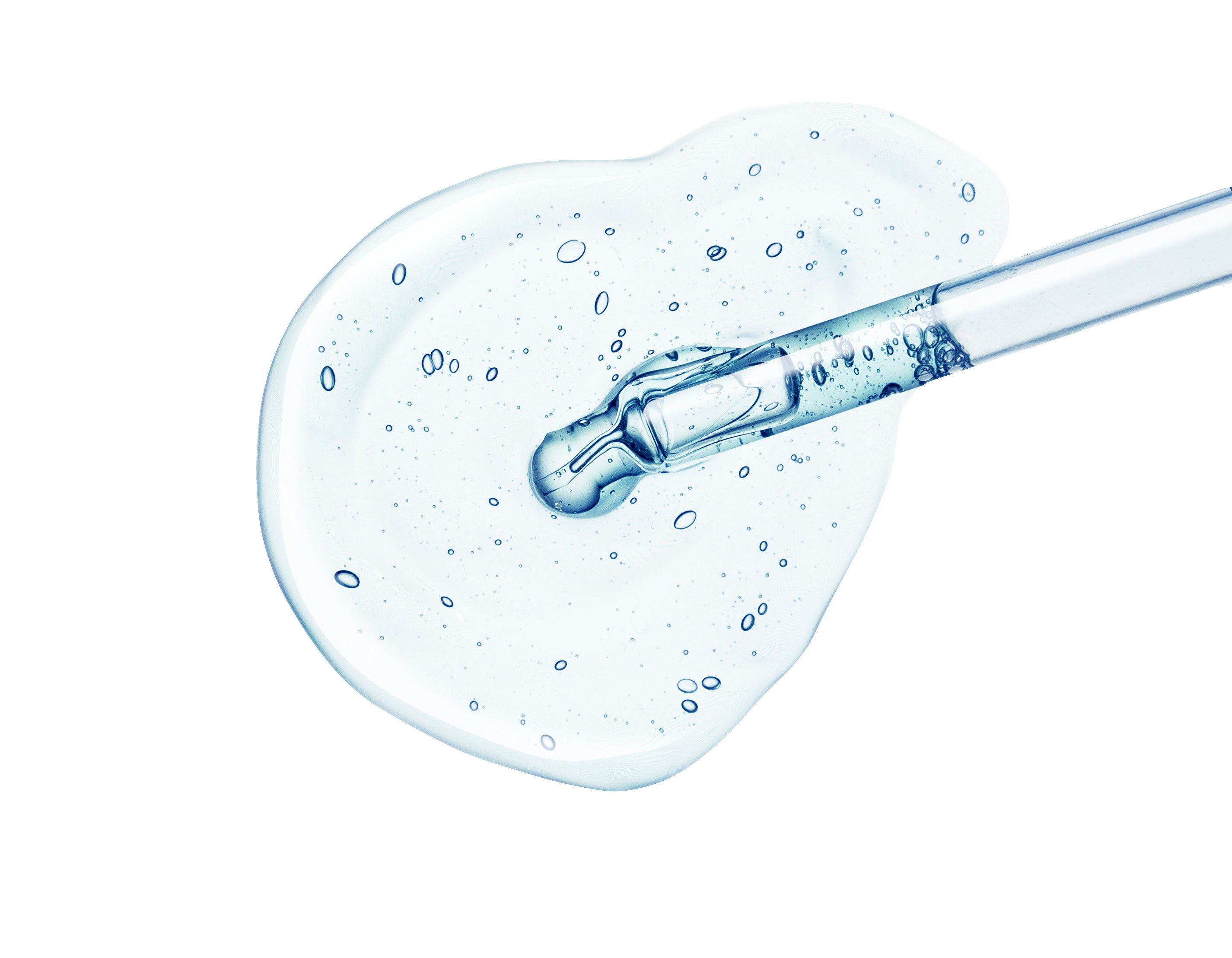
Hyaluronic Acid: Properties and Benefits
Read moreHyaluronic acid promotes skin cell regeneration and accelerates healing thanks to its anti-inflammatory and restorative properties...
-
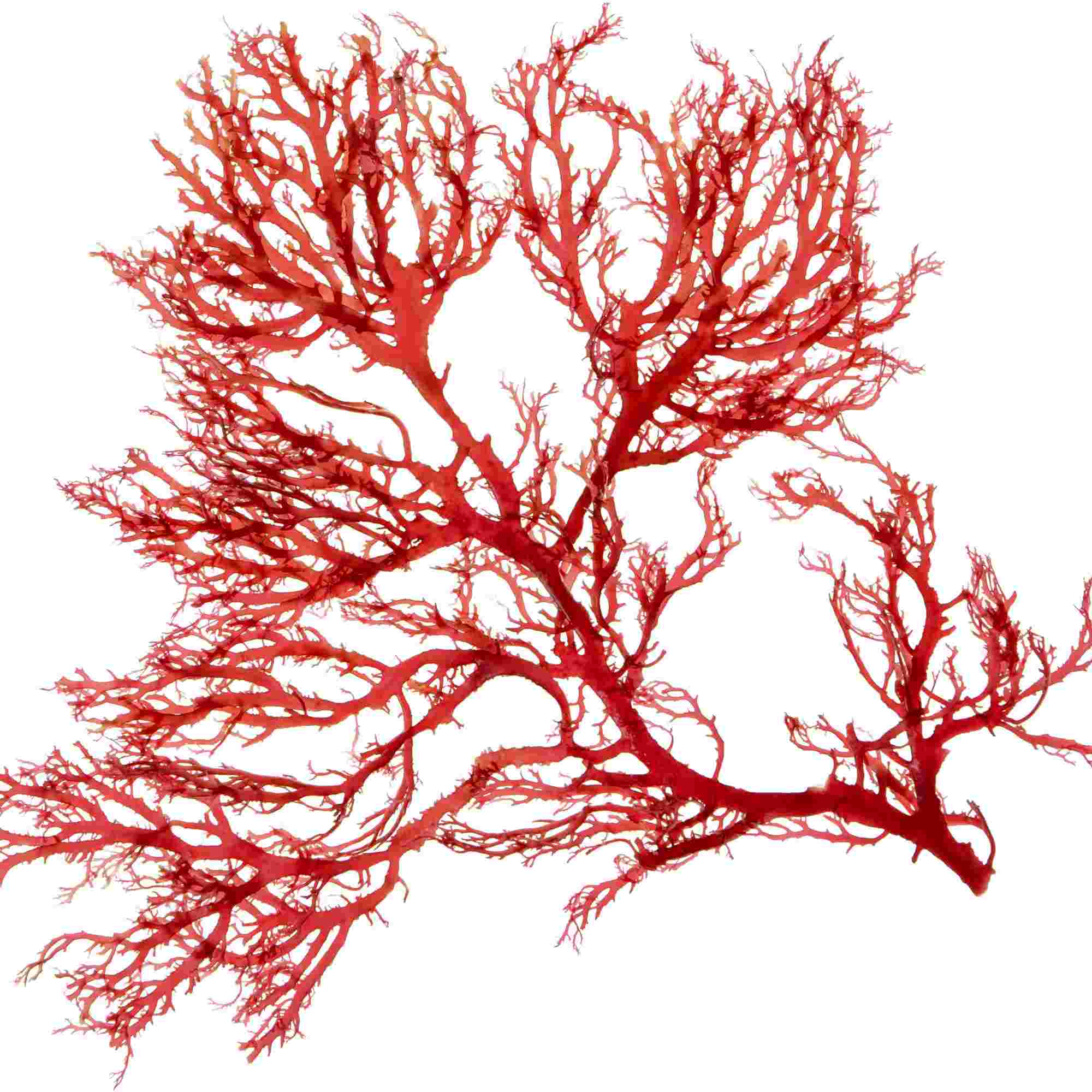
Red algae: properties and benefits
Read moreRed algae, scientifically known as Rhodophyta, is a variety of seaweed that is distinguished by its reddish colour...
-

Lindera Strychnifolia: properties and benefits
Read moreLindera Strychnifolia extracts help stimulate hair follicles, promoting healthier and stronger hair growth...
You may be interested in these articles
-
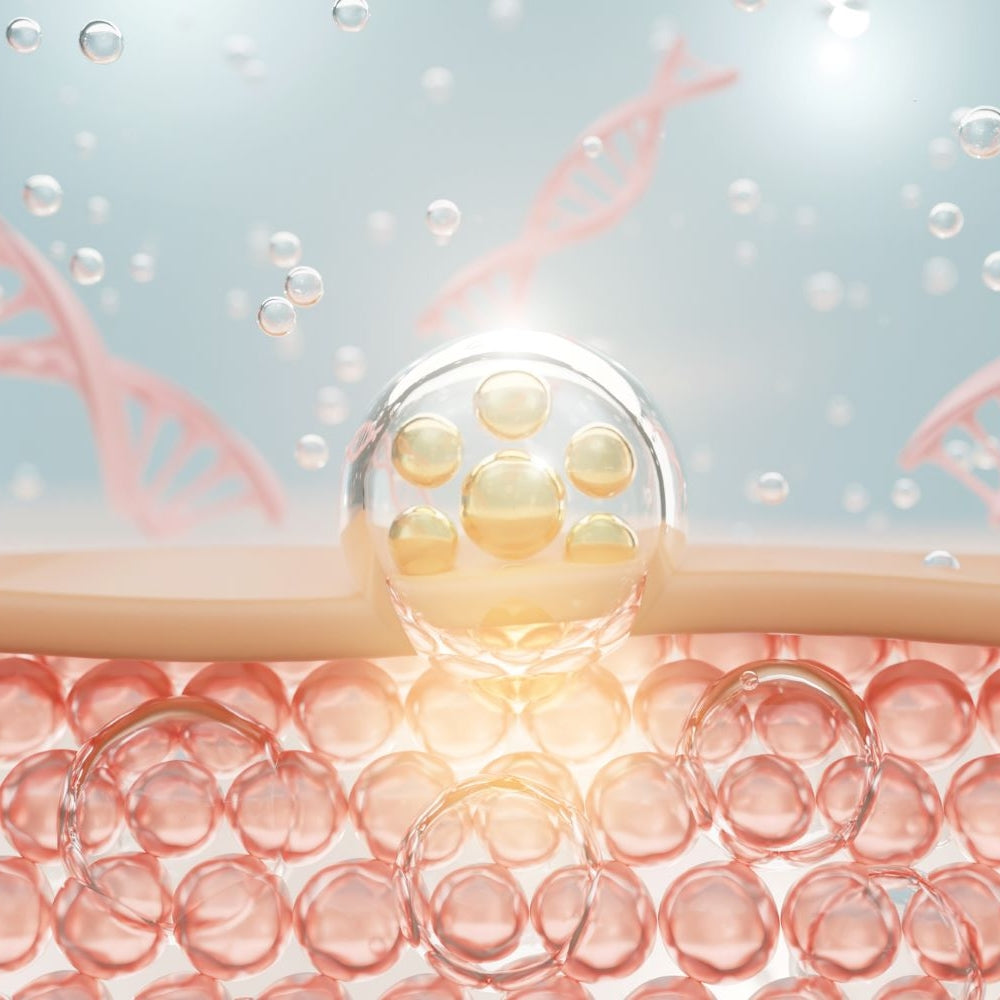
Microbiome and skin microbiota
READ MOREWe often hear about microbiota and microbiome, but how can we differentiate between these two terms? Microbiota refers to all the microorganisms living in a specific environment (called the microbiome) in a...
-
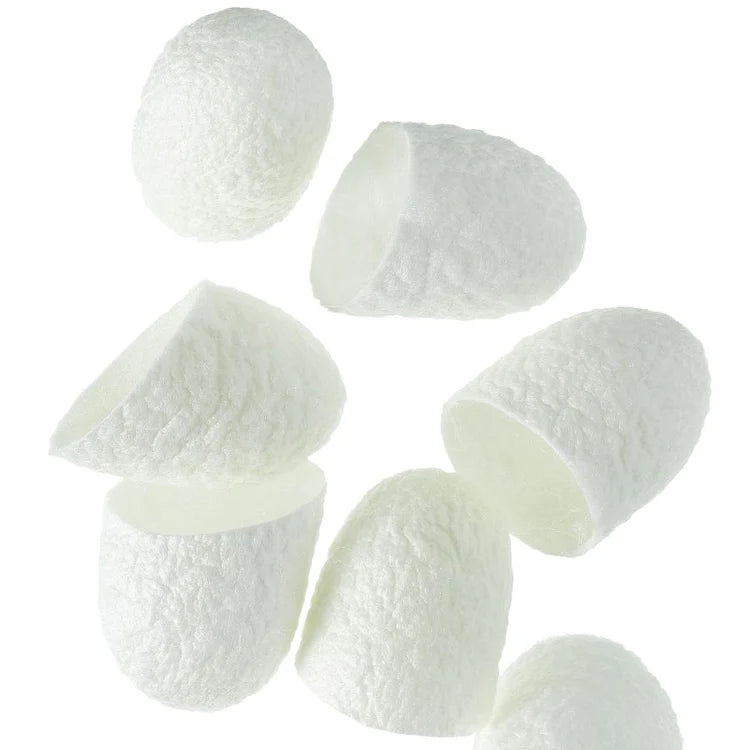
Silk: scientifically proven benefits for skin and hair
READ MORESilk is a natural material used in many forms. Mainly known to the general public in its textile form, it is often perceived as a high-end fabric, in...

